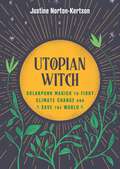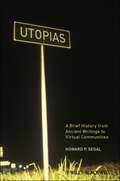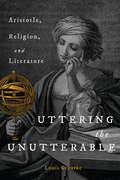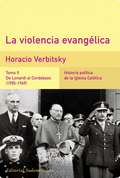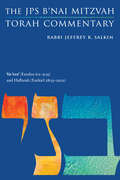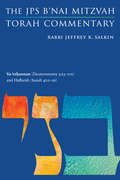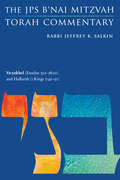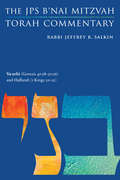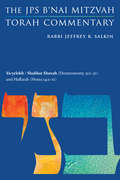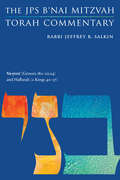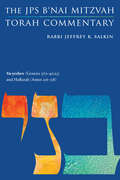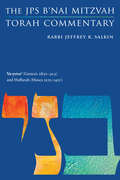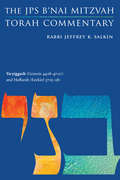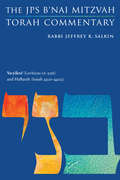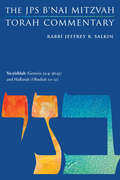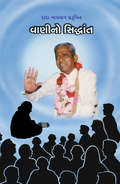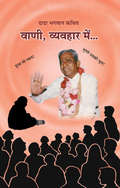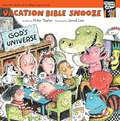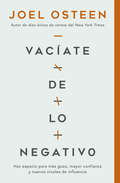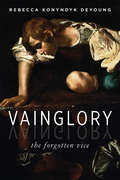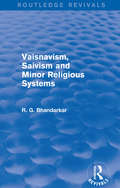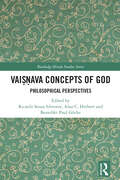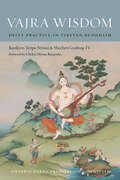- Table View
- List View
Utopian Witch: Solarpunk Magick to Fight Climate Change and Save the World
by Justine Norton-KertsonThis solarpunk book of shadows will guide you in surviving and resisting climate crisis and dystopian political systems so you can take radical action towards a positive future. Longtime activist and practicing witch Justine Norton-Kertson introduces a fresh approach to witchcraft at a time when it&’s desperately needed. Drawing on the natural connections between modern paganism and the literary, artistic, and activist movement known as solarpunk, Norton-Kertson provides meditations and correspondences for developing a spiritual practice rooted in nature, the Sun, and a powerful belief in our ability to build a better world. Readers will also find a host of spells to use in the fight against climate change, fascism, and inequality. These politically conscious magickal practices forge a new spiritual praxis to guide us as we work together to envision and create the future we want to see.
Utopias: A Brief History from Ancient Writings to Virtual Communities (Wiley Blackwell Brief Histories of Religion #48)
by Howard P. SegalThis brief history connects the past and present of utopian thought, from the first utopias in ancient Greece, right up to present day visions of cyberspace communities and paradise. Explores the purpose of utopias, what they reveal about the societies who conceive them, and how utopias have changed over the centuries Unique in including both non-Western and Western visions of utopia Explores the many forms utopias have taken – prophecies and oratory, writings, political movements, world's fairs, physical communities – and also discusses high-tech and cyberspace visions for the first time The first book to analyze the implicitly utopian dimensions of reform crusades like Technocracy of the 1930s and Modernization Theory of the 1950s, and the laptop classroom initiatives of recent years
Uttering the Unutterable: Aristotle, Religion, and Literature
by Louis F. GroarkeLiterature utters the unutterable, not through logic, not through science, not through argument, but through a pitch of eloquence so pronounced the conscientious reader cannot fail to pay attention.Louis Groarke argues that literature is an honorific term we use to describe texts that are so overpowering they lift us to an encounter with an ineffable ultimate that is beyond logical or scientific explanation. In Uttering the Unutterable he proposes a wisdom epistemology that identifies an experience of transcendence as the defining criterion of literature. Offering four mutually reinforcing definitions of literature in line with Aristotle’s theory of four causes, Groarke compares the experience of reading to Aristotle’s account of philosophical contemplation and maintains that literature has inevitable ethical content. Moving beyond the Aristotelianism of the late Chicago School, Groarke presents a new synthesis that breaks through essentialist stereotypes and contends that literature, like religion, points to an ineffable transcendental, to something beyond what we can adequately explain, prove, systematize, quantify, or enclose in a theory.Uttering the Unutterable explores how Aristotelian philosophy provides the most complete and compelling account of literature for philosophers, literary critics, and theorists.
VIOLENCIA EVANGELICA, LA (EBOOK)
by Horacio VerbitskyEste es el segundo tomo de la Historia Política de la Iglesia Católica, que comenzó con Cristo vence. Lonardi trajo la ilusión de una nueva Cristiandad que fusionara política y religión. Pero el abismo con el pueblo que produjo el golpe contra Perón amenazó la razón de ser de la Iglesia. Muchos sacerdotes se acercaron a los trabajadores y algunos obispos a la dirigencia sindical. Pese a la renovación conciliar, el cardenal Caggiano santificó la dictadura de Onganía. El vicariato castrense, Meinville, Genta, Sacheri y la Cité Catholique francesa adosctrinaron a las FFAA para la cruzada represiva contra la soberanía del pueblo. Los sacerdotes del tercer mundo fueron de la pastoral popular a la acción política. La jerarquía juró participar en el proceso de liberación con #la violencia evangélica del amor#. Pero asustada por el cordobaza se encerró con las FFAA en la fortaleza del nacional- catolicismo, asediada por la modernidad de la revolución.
VIRGEN DEL CERRO, LA (EBOOK)
by Juan TerranovaA mediados de 1990, María Livia Galliano de Obeid, un ama de casa salteña con tres hijos, comienza a escuchar una voz. Es la Virgen María que le habla y le pide que le erija un santuario en un cerro. Actualmente miles de peregrinos de la Argentina y el mundo viajan cada sábado a Tres Cerritos, Salta, para recibir la Oración de Intercesión en la que María Livia, con sólo apoyarles su mano en el hombro, los hace caer de espaldas. La Virgen del Cerro es el primer libro que retrata seriamente este fenómeno. Pero es también la crónica de las peregrinaciones hasta el cerro de las apariciones y la fascinante historia de vida de María Livia y de incontables testimonios de fe, milagros y bendiciones recibidas. Juan Terranova narra la aparición de la Virgen en Salta y examina los detalles de un acontecimiento tan masivo como secreto. La Virgen del Cerro presenta así un recorrido por el camino de la mayor manifestación de fe vivida en la Argentina durante los últimos años.
Va-'era': The JPS B'nai Mitzvah Torah Commentary (JPS Study Bible)
by Rabbi Jeffrey K. SalkinVa-'era' (Exodus 6:2-9:35) and Haftarah (Ezekiel 28:25-29:21): The JPS B’nai Mitzvah Torah Commentary shows teens in their own language how Torah addresses the issues in their world. The conversational tone is inviting and dignified, concise and substantial, direct and informative. Each pamphlet includes a general introduction, two model divrei Torah on the weekly Torah portion, and one model davar Torah on the weekly Haftarah portion. Jewish learning—for young people and adults—will never be the same. The complete set of weekly portions is available in Rabbi Jeffrey K. Salkin’s book The JPS B’nai Mitzvah Torah Commentary (JPS, 2017).
Va-'ethannan: The JPS B'nai Mitzvah Torah Commentary (JPS Study Bible)
by Rabbi Jeffrey K. SalkinThe JPS B’nai Mitzvah Torah Commentary shows teens in their own language how Torah addresses the issues in their world. The conversational tone is inviting and dignified, concise and substantial, direct and informative. Each pamphlet includes a general introduction, two model divrei Torah on the weekly Torah portion, and one model davar Torah on the weekly Haftarah portion. Jewish learning—for young people and adults—will never be the same. The complete set of weekly portions is available in Rabbi Jeffrey K. Salkin’s book The JPS B’nai Mitzvah Torah Commentary (JPS, 2017).
Va-yakhel: The JPS B'nai Mitzvah Torah Commentary (JPS Study Bible)
by Rabbi Jeffrey K. SalkinVa-yakhel (Exodus 35:1-38:20) and Haftarah (1 Kings 7:40-50): The JPS B’nai Mitzvah Torah Commentary shows teens in their own language how Torah addresses the issues in their world. The conversational tone is inviting and dignified, concise and substantial, direct and informative. Each pamphlet includes a general introduction, two model divrei Torah on the weekly Torah portion, and one model davar Torah on the weekly Haftarah portion. Jewish learning—for young people and adults—will never be the same. The complete set of weekly portions is available in Rabbi Jeffrey K. Salkin’s book The JPS B’nai Mitzvah Torah Commentary (JPS, 2017).
Va-yehi: The JPS B'nai Mitzvah Torah Commentary (JPS Study Bible)
by Rabbi Jeffrey K. SalkinVa-yehi (Genesis 47:28-50:26) and Haftarah (1 Kings 2:1-12): The JPS B’nai Mitzvah Torah Commentary shows teens in their own language how Torah addresses the issues in their world. The conversational tone is inviting and dignified, concise and substantial, direct and informative. Each pamphlet includes a general introduction, two model divrei Torah on the weekly Torah portion, and one model davar Torah on the weekly Haftarah portion. Jewish learning—for young people and adults—will never be the same. The complete set of weekly portions is available in Rabbi Jeffrey K. Salkin’s book The JPS B’nai Mitzvah Torah Commentary (JPS, 2017).
Va-yelekh / Shabbat Shuvah: The JPS B'nai Mitzvah Torah Commentary (JPS Study Bible)
by Rabbi Jeffrey K. SalkinThe JPS B’nai Mitzvah Torah Commentary shows teens in their own language how Torah addresses the issues in their world. The conversational tone is inviting and dignified, concise and substantial, direct and informative. Each pamphlet includes a general introduction, two model divrei Torah on the weekly Torah portion, and one model davar Torah on the weekly Haftarah portion. Jewish learning—for young people and adults—will never be the same. The complete set of weekly portions is available in Rabbi Jeffrey K. Salkin’s book The JPS B’nai Mitzvah Torah Commentary (JPS, 2017).
Va-yera': The JPS B'nai Mitzvah Torah Commentary (JPS Study Bible)
by Rabbi Jeffrey K. SalkinVa-yera' (Genesis 18:1-22:24) and Haftarah (2 Kings 4:1-37): The JPS B’nai Mitzvah Torah Commentary shows teens in their own language how Torah addresses the issues in their world. The conversational tone is inviting and dignified, concise and substantial, direct and informative. Each pamphlet includes a general introduction, two model divrei Torah on the weekly Torah portion, and one model davar Torah on the weekly Haftarah portion. Jewish learning—for young people and adults—will never be the same. The complete set of weekly portions is available in Rabbi Jeffrey K. Salkin’s book The JPS B’nai Mitzvah Torah Commentary (JPS, 2017).
Va-yeshev: The JPS B'nai Mitzvah Torah Commentary (JPS Study Bible)
by Rabbi Jeffrey K. SalkinVa-yeshev (Genesis 37:1-40:23) and Haftarah (Amos 2:6-3:8): The JPS B’nai Mitzvah Torah Commentary shows teens in their own language how Torah addresses the issues in their world. The conversational tone is inviting and dignified, concise and substantial, direct and informative. Each pamphlet includes a general introduction, two model divrei Torah on the weekly Torah portion, and one model davar Torah on the weekly Haftarah portion. Jewish learning—for young people and adults—will never be the same. The complete set of weekly portions is available in Rabbi Jeffrey K. Salkin’s book The JPS B’nai Mitzvah Torah Commentary (JPS, 2017).
Va-yetse': The JPS B'nai Mitzvah Torah Commentary (JPS Study Bible)
by Rabbi Jeffrey K. SalkinVa-yetse' (Genesis 28:10-32:3) and Haftarah (Hosea 12:13-14:10): The JPS B’nai Mitzvah Torah Commentary shows teens in their own language how Torah addresses the issues in their world. The conversational tone is inviting and dignified, concise and substantial, direct and informative. Each pamphlet includes a general introduction, two model divrei Torah on the weekly Torah portion, and one model davar Torah on the weekly Haftarah portion. Jewish learning—for young people and adults—will never be the same. The complete set of weekly portions is available in Rabbi Jeffrey K. Salkin’s book The JPS B’nai Mitzvah Torah Commentary (JPS, 2017).
Va-yiggash: The JPS B'nai Mitzvah Torah Commentary (JPS Study Bible)
by Rabbi Jeffrey K. SalkinVa-yiggash (Genesis 44:18-47:27) and Haftarah (Ezekiel 37:15-28): The JPS B’nai Mitzvah Torah Commentary shows teens in their own language how Torah addresses the issues in their world. The conversational tone is inviting and dignified, concise and substantial, direct and informative. Each pamphlet includes a general introduction, two model divrei Torah on the weekly Torah portion, and one model davar Torah on the weekly Haftarah portion. Jewish learning—for young people and adults—will never be the same. The complete set of weekly portions is available in Rabbi Jeffrey K. Salkin’s book The JPS B’nai Mitzvah Torah Commentary (JPS, 2017).
Va-yikra': The JPS B'nai Mitzvah Torah Commentary (JPS Study Bible)
by Rabbi Jeffrey K. SalkinVa-yikra' (Leviticus 1:1-5:26) and Haftarah (Isaiah 43:21-44:23): The JPS B’nai Mitzvah Torah Commentary shows teens in their own language how Torah addresses the issues in their world. The conversational tone is inviting and dignified, concise and substantial, direct and informative. Each pamphlet includes a general introduction, two model divrei Torah on the weekly Torah portion, and one model davar Torah on the weekly Haftarah portion. Jewish learning—for young people and adults—will never be the same. The complete set of weekly portions is available in Rabbi Jeffrey K. Salkin’s book The JPS B’nai Mitzvah Torah Commentary (JPS, 2017).
Va-yishlah: The JPS B'nai Mitzvah Torah Commentary (JPS Study Bible)
by Rabbi Jeffrey K. SalkinVa-yishlah (Genesis 32:4-36:43) and Haftarah (Obadiah 1:1-21): The JPS B’nai Mitzvah Torah Commentary shows teens in their own language how Torah addresses the issues in their world. The conversational tone is inviting and dignified, concise and substantial, direct and informative. Each pamphlet includes a general introduction, two model divrei Torah on the weekly Torah portion, and one model davar Torah on the weekly Haftarah portion. Jewish learning—for young people and adults—will never be the same. The complete set of weekly portions is available in Rabbi Jeffrey K. Salkin’s book The JPS B’nai Mitzvah Torah Commentary (JPS, 2017).
Vaani No Siddhant (Granth): વાણીનો સિધ્ધાંત(ગ્રંથ)
by Dada Bhagwanસવારે જાગ્યા ત્યાંથી સૂતાં સુધી અવિરત વાણીનો વ્યવહાર દરેકને ચાલતો જ હોય છે ! અરે ઊંઘમાં ય કેટલાંક બબડતા હોય છે !!! વાણીનો વ્યવહાર બે રીતે પરિણમતો હોય છે. કડવો યા તો મીઠો ! ઘણી વખત, આપણાથી એવું બોલાઈ જાય છે જે આપણે ઈચ્છતા નહોતા અને પછી તેનો પસ્તાવો કરીએ છીએ. પ્રસ્તુત પુસ્તકમાં જ્ઞાની પુરુષ, દાદાશ્રીએ વાણીના સૂક્ષ્મમાં સૂક્ષ્મ અને સૈદ્ધાંતિક ફોડની જબરદસ્ત સમજણ આપી છે. દાદાશ્રી વાણીના સૂક્ષ્મમાં સૂક્ષ્મ સૈદ્ધાંતિક ફોડથી માંડીને દૈનિક વ્યવહાર જીવનમાં પતિ-પત્ની વચ્ચે, મા-બાપ છોકરાં વચ્ચે, નોકર- શેઠ વચ્ચે, જે વાણી વપરાય છે, તે કેવી સમ્યક્ પ્રકારે હોવી જોઈએ કે કોઈને દુઃખ ન થાય, તેના પ્રેક્ટીકલ દાખલાઓ આપી સુંદર સમાધાન કરાવે છે. સાથે સાથે દાદાશ્રી કોઈના તરફથી આવતી કડવી (કટુ) વાણી સામે સમતાથી કેવીરીતે વર્તવું તેનો ઉકેલ આપે છે. પ્રસ્તુત પુસ્તક વાચકને વાણીથી ઉત્પન્ન થતી અથડામણો અને એમાં કઈ રીતે સમાધાનકારી ઉકેલ લાવવાં? તેમ જ પોતાની કડવી વાણી, આઘાતી વાણી હોય, તો તેને કઈ સમજણે ફેરફાર કરવો? તેનું માર્ગદર્શન આપે છે. (પ્રસ્તુત પુસ્તકનું વાંચન) વાચક ઘર અને બહારનાં બધાં જ વ્યવહારોમાં (સંબંધોમાં) પોતે કેવીરીતે કલેશ રહિત બનવું તે શીખી શકે છે.
Vaani Vyvahaar Me (Sanxipt): वाणी व्यवहार मॅ
by Dada Bhagwan‘वाणी,व्यवहार में’, यह पुस्तक में हमें वाणी से संबंधित कई सारे मौलिक सिद्धांतों की जानकारी प्राप्त होती है| वाणी मुख्यतः निर्जीव है, यह सिर्फ एक टेप रिकॉर्ड है, जिसकी पूरी रिकॉर्डिंग हमारे पिछले जन्मो में हुई है| वाणी, एक बहुत ही अमूल्य वस्तु है जिसकी कीमत समझना बहुत ज़रूरी है| हमारी वाणी ऐसी होनी चाहिए कि जिससे किसीको भी दुःख ना हो| दादाश्री इस किताब में हमें वाणी कि महत्वता, हमारे रोजिंदा जीवन में होने वाले व्यवहार को लक्ष में रखकर, बहुत सारे उदाहरणों के साथ बताते है जिससे हमें यह समझ में आता है कि हम हमारी वाणी को किस तरह कोमल और मधुर बना सकते है| जिस तरह किसी टेप को बजाने से पहले उसमें रिकॉर्डिंग करनी होती है उसी तरह हमारे मुँह से जो वाणी निकलती है वह सब पिछले जन्मो में की हुई रिकॉर्डिंग का ही परिणाम है| वाणी के सिद्धांतों को और अधिक गहराई में समझने के लिए यह किताब अवश्य पढ़े|
Vacation Bible Snooze (Tales from the Back Pew)
by Mike ThalerHey! Who in his right mind would want to go to school during summer vacation to study the Bible? Me, that’s who! If VBS is as exciting as some of the great Bible stories I know, then count me in!
Vacíate de lo negativo: Haz espacio para más gozo, mayor confianza y nuevos niveles de influencia
by Joel OsteenRelease the negative thoughts and feelings that are weighing you down with #1 New York Times bestselling author and Lakewood Church pastor Joel Osteen. It's easy to go through life holding on to things that are weighing you down. Guilt. Resentment. Doubt. Worry. The problem is when you allow these things in, they're taking up space for the good things that should be there. Imagine your life is like a container. You were created to be filled with joy, peace, confidence, creativity. But if you allow worry, shame, and other negativity in, it pushes out good thoughts. Life is too short to go through it with negative things holding you down. The Scripture says, "Give no place to the enemy." Give no place to worry. Give no place to bitterness. You control what's in your container. You control what you think about, what you choose to allow in. Every morning when you wake up, you need to empty out anything negative from the day before. Empty Out the Negative will help you disregard the ridiculing voices in your head and instead hear God and his grace. Empty out the negative, and God will fill you with good.
Vainglory: The Forgotten Vice
by Rebecca Konyndyk DeYoungJulia Roberts on the red carpet at the Oscars. Lady Gaga singing “Applause” to worshipful fans at one of her sold-out concerts. And you and me in our Sunday best in the front row at church. What do we have in common?Chances are, says Rebecca Konyndyk DeYoung, that we all suffer from vainglory -- a keen desire for attention and approval. Although contemporary culture has largely forgotten about vainglory, it was on the original list of seven capital vices and is perhaps more dangerous than ever today.In Vainglory: The Forgotten Vice DeYoung tells the story of this vice, moving from its ancient origins to its modern expressions. She defines vainglory, gives examples from popular culture, explores motivational sources, and discusses other vices associated with it such as hypocrisy and boasting. After exposing the many ways in which vainglory can rear its ugly head, she explores personal spiritual practices that can help us resist it and community practices that can help us handle glory well.
Vaishali Ki Nagarvadhu: वैशाली की नगरवधू
by Acharya Chatursenयह उपन्यास एक बौद्धकालीन ऐतिहासिक कृति है। लेखक के अनुसार इसकी रचना के क्रम में उन्हें आर्य, बौद्ध, जैन और हिंदुओं के साहित्य का सांस्कृतिक अध्ययन करना पड़ा जिसमें उन्हें 10 वर्षों का समय लगा। यह उपन्यास कोई एक-दो महीनों में पूर्ण नहीं हुआ बल्कि आचार्य शास्त्री ने इत्मीनान से इसके लेखन में 1939-1947 तक कि नौ वर्षों की अवधि लगाई। इस उपन्यास के केंद्र में 'वैशाली की नगरवधू' के रूप में इतिहास-प्रसिद्ध वैशाली की, सौंदर्य की साक्षात प्रतिमा तथा स्वाभिमान और आत्मबल से संबलित 'अम्बपाली' है जिसने अपने जीवनकाल में सम्पूर्ण भारत के राजनीतिक और सामाजिक परिवेश को प्रभावित किया था। उपन्यास में अम्बपाली की कहानी तो है किंतु उससे अधिक बौद्धकालीन सामाजिक, राजनीतिक, धार्मिक स्थितियों का चित्रण उपलब्ध है और यही उपन्यासकार का लक्ष्य भी है। विभिन्न संस्कृतियों यथा जैन और बौद्ध और ब्राह्मण के टकराव के साथ-साथ तत्कालीन विभिन्न गणराज्यों यथा काशी, कोशल तथा मगध एवं वैशाली के राजनीतिक संघर्षों का विवरण भी इस कृति में उपलब्ध है। उपन्यास की नायिका फिर भी अम्बपाली ही है जो आदि से अंत तक उपन्यास में छाई हुई है।
Vaisnavism, Saivism and Minor Religious Systems: Aus: Grundriss Der Indo-arischen Philologie Und Altertumskunde, Bd. 3. H. 6 (Routledge Revivals #3, 6)
by R G BhandarkarBhandarkar’s Vaisnavism, Saivism and Minor Religious Systems, first published in 1913, explores the origins of Vaishnavism by examining its sources of religion, aspects of the Mahabharata, and the Cult of Rama. Bhandarkar also discusses Saivism by exploring its origin and development. This text is ideal for students of theology.
Vaiṣṇava Concepts of God: Philosophical Perspectives (Routledge Hindu Studies Series)
by Benedikt Paul Göcke Ricardo Sousa Silvestre Alan C. HerbertThis book explores a number of concepts of God in Vaiṣṇavism, which is commonly referred to as one of the great Hindu monotheistic traditions. By addressing the question of what attributes God possesses according to particular Vaiṣṇava textual sources and traditions, the book locates these concepts within a global philosophical framework. The book is divided into two parts. The first part, God in Vaiṣṇava Texts, deals with concepts of God found in some of the more prominent canonical Vaiṣṇava texts: the Bhagavad-Gītā, the Bhagavata-Purāṇa, the Jayākhya-Saṃhitā as representative of the Pāñcarātras, and the Mahābhārata. The second part, God in Vaiṣṇava Traditions, addresses concepts of God found in several Vaiṣṇava traditions and their respective key theologians. In addition to the Āḻvārs, the five traditional Vaiṣṇava schools—the Śrī Vaiṣṇava tradition, the Madhva tradition, the Nimbārka tradition, the Puṣṭimārga tradition, and the Caitanya Vaiṣṇava tradition—and two contemporary ones—those of Ramakrishna (who has Vaiṣṇava leanings) and Swami Bhaktivedanta—are considered. The book combines normative, critical, and descriptive elements. Some chapters are philosophical in nature, and others are more descriptive. Each unpacks a specific Vaiṣṇava concept of God for future philosophical analysis and critique. Written by experts who break new ground in this presentation and representation of the diversity of Vaiṣṇava texts and traditions, the book provides approaches that reflect the amount of philosophical and historical deliberation on the specific issues and divine attributes so far considered in the field of Hindu Studies. This book will be of interest to researchers in disciplines including philosophy of religion and Indian philosophy, cross-cultural and comparative philosophy, analytic philosophy of religion, Hindu Studies, theology, and religious studies.
Vajra Wisdom: Deity Practice in Tibetan Buddhism
by Dharmachakra Translation Committee Kunkyen Tenpe Nyima Shechen GyaltsapVajra Wisdom presents the commentaries of two great nineteenth-century Nyingma masters that guide practitioners engaged in development stage practice through a series of straightforward instructions. The rarity of this kind of material in English makes it indispensable for practitioners and scholars alike. The goal of development stage meditation in the Tibetan Buddhist tradition is to directly realize the inseparability of phenomena and emptiness. Preceded by initiation and oral instructions, the practitioner arrives at this view through the profound methods of deity visualization, mantra recitation, and meditative absorption.
